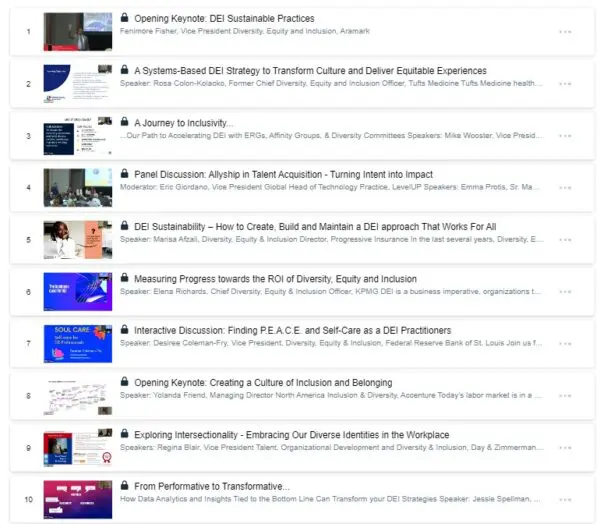Integrating well-being and recognition into employee engagement strategy can help people and companies alike thrive.
By Maggie Mancini
Employee well-being is a key pillar to any successful HR strategy, ensuring that workers have the support and resources they need to stay productive, efficient, and loyal to the organization. Though well-being is crucial to improving productivity and retention, employee engagement is often the catalyst that sets those goals in motion, says Ed O’Boyle, global practice leader at Gallup. If managers are unable to set clear expectations for employees; don’t ensure that employees feel like they’re part of a team; and don’t provide opportunities for employees to voice their concerns, it’s difficult to keep them engaged and fulfilled, he says.
“When we think about the world of employee engagement and well-being, what we’ve learned is about 52% of Americans are thriving in life and 30% of Americans are thriving in work,” O’Boyle explains. For those who are thriving in life, 86% are more likely to be engaged at work; 79% are likely to agree that their organization is a great place to work; 32% are less likely to search for a new job; and 51% are less likely to be burned out at work.
When asked whether they think their organization cares about their well-being, only 24% of U.S. employees strongly agree, according to research from Gallup. When CHROs are asked the same question, 65% say that organizations care about employee well-being. To address and eliminate this gap, O’Boyle says it’s important to build well-being conversations into the fabric of what it means to be a good leader and manager.
“When managers and leaders start to have one meaningful conversation per week with their employees, those conversations are often awkward in the beginning and can feel work-oriented,” he says. “Eventually, with repetition, these conversations start to open up to other parts of the employee’s life, things that are going on at home. And as the manager starts to catalog those and understands what opportunities that the company has within its total rewards package, they can start to match well-being opportunities to their employees.”
Even if managers don’t consider themselves experts on well-being, O’Boyle says, they can still utilize these meaningful conversations to encourage employees to take advantage of the resources and benefits offered by the organization.
For organizations looking to integrate well-being into their total rewards strategy, O’Boyle says that it’s important to listen to employees and utilize their feedback to understand what programs would benefit them, what existing programs they already use, and how those programs can be improved to support improved well-being.
Another tactic for improving well-being is investing in employee recognition. When employees receive recognition and appreciation for doing good work, the likelihood of them being engaged at work increases substantially. There are three types of recognition that organizations can provide employees that can help improve well-being.
Express gratitude to employees for doing good work. When people are celebrated for the work that they do—particularly work that fits with the mission and purpose of the organization—they thrive both in work and in life, O’Boyle says.
Celebrate important life events. HR leaders can amplify their modeling of well-being to employees by celebrating their important life events. These include things like buying a home, completing a marathon, adopting a pet, getting married, or anything extraordinary done outside of the workplace.
Show appreciation to employees during work milestones. Being sure to show appreciation and gratitude to employees who are approaching an anniversary at work or receiving a promotion can help improve engagement and well-being.
O’Boyle adds that the most important step in improving recognition and well-being in the workplace is getting the organization to discuss these issues at the leadership level. The more that these leaders signal and model the behaviors they’re looking for, the more that employees will trust and believe in those models. This is how those core values become self-sustaining, O’Boyle says.
When asked whether they think their organization cares about their well-being, only 24% of U.S. employees strongly agree, whereas 65% of CHROs agree with the statement.
“Recognition at its base is more than just saying thank you to someone,” says Lynette Silva Heelan, EMEA consulting practice lead at Workhuman. “It’s me saying that I see you, I see what you do, what you do matters, you matter. When I give that message of recognition and all the details around how an employee demonstrated our core value of trust and how that helped me or the customer or the client community in a detailed way that conveys to them the relevancy of what they do every day is important.”
Heelan explains that any organization’s purpose is collectively what all its employees are doing, but employees derive personal meaning from what they do every day. By aligning to that bigger purpose, she explains, employees can make those connections based on the people around them.
“That’s how recognition drives engagement,” she says. “I know that I’m much more engaged in what I’m doing, who I’m doing it with, how I’m showing up, and how I’m delivering. It also helps with my resiliency. It gives me a reason to keep going and to keep moving forward because I know that what I’m doing matters.”
Heelan explains that employee well-being is not just about fitness, step challenges, and smoking cessation.
“It’s about heart, wellness, soul, how organizations are helping people see each other and understand the complexity of the humans that they’re engaging with at work,” she explains.
For employees, understanding the relevancy of the work they do makes all the difference, Heelan says. When employees feel they’re being recognized for meaningful work, they are 44% more likely to say they are thriving in their lives—not just at work, but in their personal lives.
“We all take our work home with us,” she says. “We all take whatever happened to us at work home with us and our families, our friends, and our pets either benefit or don’t from that. This is where we all have the power and the responsibility for the well-being of our colleagues. If we can simply be more intentional and keep an eye out for someone, say thank you, tell them they matter, their well-being will improve. How can we not?”















